Shocking Secrets Revealed: The Truth About Anaerobic Septic System Cost!
 |
| Anaerobic Septic System Cost |
Are you considering installing an
anaerobic septic system? Before you make any decisions, it's crucial to uncover
the shocking secrets behind the cost of these systems.
In this article, we will reveal the truth
about anaerobic septic system cost and provide you with valuable insights to
help you make an informed decision.
Anaerobic septic systems are a popular
choice for homeowners due to their efficient waste treatment process.
Understanding how these systems work is essential in comprehending their cost
implications.
We will delve into the pros and cons of
anaerobic septic systems, exploring factors that influence their overall
expense. Additionally, we'll compare the costs of anaerobic septic systems toother alternatives on the market.
To give you a clear picture, we'll
present real-life examples of anaerobic septic system costs and offer tips on
how to reduce these expenses. Furthermore, we'll discuss maintenance and upkeep
costs associated with these systems so that you can plan your budget effectively.
By examining all aspects of anaerobic
septic system cost through a meticulous cost-benefit analysis, we aim to
empower you with knowledge that will guide your decision-making process.
Get ready for eye-opening revelations
that will transform your understanding of anaerobic septic system cost!
Key Takeaways
•
Anaerobic septic systems are popular for their efficient waste treatment process.
•
They are simpler to install and
maintain compared to aerobic systems.
•
Factors such as property size,
soil conditions, and installation complexity can influence the cost of
anaerobic septic systems.
•
While anaerobic septic systems
effectively reduce solid waste volume and prevent groundwater contamination,
they may emit odors and not remove all pathogens or contaminants from
wastewater.
Understanding
Anaerobic Septic Systems
You may be surprised to discover the intricacies of anaerobic septic
systems. When it comes to anaerobic septic system cost, there are several
factors that come into play.
First and foremost is the design of the system itself. Anaerobic
septic systems are designed to function without oxygen, relying on bacteria to
break down waste material. This design requires specialized components such as
a tank for waste storage and a drain field for effluent distribution.
Maintenance is another aspect that affects the overall cost of an
anaerobic septic system. Regular maintenance is crucial to ensure proper
functioning and prevent any potential issues. This includes regular pumping of
the tank, inspection of pipes and valves, and checking for any signs of leakage
or blockage.
So, how does an anaerobic septic system work? It starts with the
collection of wastewater from your home or building into the tank. Inside the
tank, solid waste settles at the bottom while liquid waste floats above it.
Bacteria present in the tank then begin breaking down organic matter in this
oxygen-deprived environment.
The partially treated effluent then flows out into a drain field
where further treatment occurs through natural processes involving soil and
microorganisms. These processes help filter out harmful pathogens before
returning cleaner water back into the environment.
Now that you have a better understanding of what an anaerobic septic
system is and how it works, let's delve deeper into its functionality in terms
of efficiency and effectiveness without going into too much detail about each
step involved in its operation.
How Anaerobic
Septic Systems Work
Did you know that anaerobic septic systems operate without the need
for oxygen? Unlike aerobic septic systems, which rely on oxygen to break down
waste, anaerobic septic systems function in an oxygen-free environment. This
unique characteristic sets them apart from their aerobic counterparts.
To understand how anaerobic septic systems work, let's take a closer
look at the process. When wastewater enters the system through the inlet pipe,
it flows into the first chamber of the tank. In this compartment, solid
particles settle to the bottom while fats and oils rise to form a scum layer on
top. The liquid in between undergoes anaerobic digestion, a biological process
where bacteria break down organic matter in the absence of oxygen.
As the liquid exits the first chamber and enters subsequent
chambers, further separation occurs. The remaining solids continue to settle at
each stage, while clearer liquid moves forward into a final settling area
before exiting through an outlet pipe. This well-designed system ensures
effective treatment of wastewater by allowing gradual decomposition and
separation within each compartment.
By understanding this process and considering an anaerobic septic
system diagram, you can appreciate its efficiency in breaking down waste
without relying on oxygen. However, it's important to note that while anaerobic
systems have their advantages, they also come with some drawbacks.
Now that you have a better understanding of how anaerobic septic
systems work, let's explore both their pros and cons in more detail.
Pros and
Cons of Anaerobic Septic Systems
Consider the advantages and disadvantages of opting for an anaerobic
septic system to make an informed decision about its suitability for your
needs. Anaerobic septic systems have both pros and cons that should be taken
into account before making a choice.
One advantage of anaerobic septic systems is their simplicity. These
systems are relatively easy to install and maintain, making them a
cost-effective option for homeowners. Additionally, anaerobic septic systems
require less space compared to aerobic systems, which can be beneficial for
properties with limited land availability.
Another advantage is the ability of anaerobic septic systems to
break down waste efficiently. The bacteria present in these systems decompose
organic matter without requiring oxygen, resulting in effective waste
treatment. This process reduces the volume of solid waste and prevents harmful
substances from contaminating groundwater.
However, there are also some drawbacks to consider. One disadvantage
is the potential for odors emitted by anaerobic septic systems due to the lack
of oxygen during decomposition. Proper ventilation and regular maintenance can
help mitigate this issue.
Another drawback is the limited treatment capabilities of anaerobic
septic systems compared to aerobic alternatives. While they effectively reduce
solid waste volume, they may not remove all pathogens or contaminants from
wastewater.
Weighing the pros and cons will help you determine if an anaerobic
septic system is suitable for your needs. Now that you understand its
advantages and disadvantages, let's explore the factors that influence
anaerobic septic system cost without delay.
Factors
that Influence Anaerobic Septic System Cost
Take into account various factors that can impact the cost of
installing and maintaining an anaerobic septic system. The first factor to
consider is the size of your property. Larger properties require larger septic
systems, which will inevitably increase the overall cost.
Additionally, soil conditions play a crucial role in determining the
cost. If your soil has poor drainage or high water table levels, it may be
necessary to invest in additional components such as drain fields or pumps,
leading to higher expenses.
Another important factor is the complexity of the installation
process. If your property has obstacles such as trees, rocks, or underground
utilities that need to be worked around during installation, this can
significantly drive up costs due to increased labor and materials required.
Furthermore, accessibility plays a significant part in determining
costs. If your property is located in a remote area with limited access for
heavy machinery and construction vehicles, it may require extra effort and
resources to complete the installation successfully.
Maintenance requirements are also essential considerations when
assessing costs. Regular inspections and pumping are necessary for anaerobic
septic systems to ensure their efficient operation. Neglecting these
maintenance tasks can lead to costly repairs or even system failure down the
line.
Various factors influence anaerobic septic system costs including
property size, soil conditions, installation complexity, accessibility, and
ongoing maintenance needs. By considering these factors carefully before
installing an anaerobic septic system on your property, you'll be able to
better estimate potential expenses accurately without any surprises later on.
Now let's transition into comparing anaerobic septic system costs to
other system's alternatives...
Comparing
Anaerobic Septic System Costs to Other Systems
Are you aware of the significant savings you can enjoy by choosingan alternative septic system over anaerobic systems? When comparing anaerobic
septic system costs to other systems, it becomes evident that there are more
cost-effective options available.
Consider the following:
•
Aerobic Septic Systems: These systems utilize oxygen to break down waste, resulting in
more efficient and thorough treatment. While aerobic systems may have a higher
upfront cost due to their advanced technology, they offer long-term savings
through reduced maintenance and lower energy consumption.
•
Composting Toilets: Composting toilets are an eco-friendly option that converts human
waste into compost material. Not only do they eliminate the need for water
usage, but they also require minimal maintenance and have low operating costs.
•
Mound Systems: Mound systems are ideal for properties with high water tables or
unsuitable soil conditions. Although they can be initially expensive due to
site preparation and construction requirements, mound systems provide reliable
wastewater treatment without the recurring expenses associated with anaerobic
systems.
•
Sand Filters: Sand filter systems use layers of sand and gravel to naturally
filter wastewater before it is discharged into the soil. They are a
cost-effective alternative to anaerobic septic systems as they require less
ongoing maintenance and have lower installation costs.
•
Recirculating Media Filters: These filters use synthetic media beds that enhance bacterial
growth for efficient wastewater treatment. Recirculating media filters offer
similar benefits as sand filters but with even greater efficiency and
longevity.
By considering these alternatives, you can make a well-informed
decision about your septic system that not only saves money but also provides
effective wastewater treatment.
Now let's explore some common misconceptions about anaerobic septic
system costs...
Common
Misconceptions about Anaerobic Septic System Costs
Let's debunk some common myths about the expenses associated with
anaerobic septic systems. Contrary to popular belief, anaerobic septic systems
are not exorbitantly expensive. Many people assume that because these systems
rely on specialized technology and require regular maintenance, they must come
with a hefty price tag. However, this is simply not the case.
One misconception is that anaerobic septic systems are more costly
than aerobic ones. While it's true that aerobic systems tend to be cheaper
upfront, they often require more frequent maintenance and have higher
operational costs in the long run. Anaerobic septic systems, on the other hand,
are designed to be low-maintenance and cost-effective over time.
Another myth revolves around installation expenses. Some believe
that installing an anaerobic septic system involves extensive excavation and
construction work, resulting in significant additional costs. In reality,
modern anaerobic systems can often be installed using less invasive techniques
like trenchless technology or above-ground installation methods, reducing both
time and expenses.
Furthermore, there is a misconception surrounding the lifespan of
anaerobic septic systems. Some argue that these systems have a shorter lifespan
compared to other options available in the market today. However, when properly
maintained and operated according to guidelines provided by manufacturers and
regulatory bodies, anaerobic septic systems can last just as long as
alternative options.
Don't let common misconceptions misguide you when considering the
costs of an anaerobic septic system. They can offer a cost-effective and
reliable solution for your wastewater management needs over their lifetime
without breaking the bank or compromising performance. Now let's explore some
real-life examples of anaerobic septic system costs without further delay!
Real-Life
Examples of Anaerobic Septic System Costs
Imagine walking into a small suburban home and seeing a beautifully
landscaped yard with vibrant flowers and lush green grass, all thanks to the
cost-effective anaerobic septic system that was installed for just $8,000. This
is not an isolated incident; there are numerous real-life examples of
homeowners who have successfully installed anaerobic septic systems at
reasonable costs.
One such example is the Johnson family who recently had an anaerobic
septic system installed in their home. The total cost of installation,
including labor and materials, came out to be around $7,500. They were
pleasantly surprised by the affordability of this option compared to other
wastewater treatment alternatives.
Another case study involves the Martinez family, who live in a rural
area. They opted for an anaerobic septic system due to its lower cost and ease
of maintenance. Their system was installed for approximately $8,200, allowing
them to allocate their budget towards other essential home improvements.
These real-life examples highlight the fact that anaerobic septic
systems can indeed be affordable solutions for homeowners seeking efficient
wastewater treatment options. By choosing this technology over traditional
aerobic systems or costly municipal sewer connections, homeowners can save
significantly on upfront installation costs.
Now that you've seen how affordable anaerobic septic systems can be
in practice, let's explore some tips for reducing these costs even further. By
implementing strategies such as careful site selection, proper sizing based on
household needs, and regular maintenance checks, you can ensure that your
anaerobic septic system remains both cost-effective and environmentally
friendly.
Tips for
Reducing Anaerobic Septic System Costs
Now that you've seen some real-life examples of anaerobic septic
system costs, let's dive into some tips for reducing these expenses. By implementing
these strategies, you can potentially save a significant amount of money while
still maintaining an efficient and reliable septic system.
First and foremost, regular maintenance is crucial in keeping your
anaerobic septic system running smoothly and preventing costly repairs.
Schedule routine inspections with a professional to identify any potential
issues early on. Additionally, make sure to pump out the tank regularly to
prevent buildup and clogging.
Another way to reduce costs is by conserving water usage within your
household. Anaerobic systems rely on bacteria to break down waste, so excessive
water usage can overload the system and lead to more frequent maintenance
needs. Fix leaks promptly, use low-flow fixtures, and practice water-saving habits
to help minimize strain on the septic system.
Proper waste disposal is also essential in prolonging the lifespan
of your anaerobic septic system and avoiding unnecessary expenses. Avoid
flushing non-biodegradable items such as sanitary products or grease down the
toilet or drains as they can cause blockages and damage to the system.
Lastly, educating yourself about the specific requirements of your
anaerobic septic system is key in reducing long-term costs. Understand how it
functions and what precautions should be taken to make informed decisions
regarding its upkeep.
By following these tips for reducing anaerobic septic system costs,
you can ensure both financial savings and a well-maintained wastewater
treatment solution for your property. Now, let's explore another critical
aspect: maintenance and upkeep costs for anaerobic septic systems...
Maintenance
and Upkeep Costs for Anaerobic Septic Systems
Reducing maintenance and upkeep expenses is crucial for ensuring the
longevity and efficiency of your anaerobic septic system. By following these
simple tips, you can keep your costs low while maximizing the performance of
your system.
•
Regular inspections: Schedule
regular inspections with a professional to detect any potential issues early
on. This proactive approach can save you from costly repairs down the line.
•
Proper waste disposal: Be
mindful of what goes into your septic system. Avoid flushing non-biodegradable
items or chemicals that can disrupt the natural balance of bacteria in the
tank. Educate everyone in your household about proper waste disposal practices.
•
Efficient water usage:
Conserving water not only benefits the environment but also reduces strain on
your septic system. Install low-flow fixtures, repair leaks promptly, and avoid
excessive water usage to prevent overloading the system.
Taking these steps will help you minimize maintenance and upkeep
costs while keeping your anaerobic septic system running smoothly. By investing
time and effort into maintaining it properly, you're safeguarding its
functionality for years to come.
Now that we've explored ways to reduce maintenance costs, let's
delve into making an informed decision by considering the cost-benefit
analysis. It's important to assess both short-term expenses and long-term
benefits when deciding on whether an anaerobic septic system is right for you.
Making an
Informed Decision: Considering the Cost-Benefit Analysis
Considering the cost-benefit analysis allows you to make an informed
decision that will ultimately save you money and provide peace of mind for
years to come.
When evaluating the cost of an anaerobic septic system, it is
essential to consider both the initial investment and the long-term maintenance
expenses.
The upfront cost of installing an anaerobic septic system can vary
depending on factors such as location, soil conditions, and tank size. On
average, you can expect to spend between $3,000 and $8,000 for a basic system.
However, keep in mind that this doesn't include additional costs like permits
or site preparation.
While the initial expense may seem steep, it's important to remember
that anaerobic septic systems require minimal maintenance compared to their
aerobic counterparts. The absence of mechanical parts means fewer chances for
breakdowns or costly repairs. Additionally, these systems don't rely on electricity
for operation, resulting in lower utility bills over time.
Regular maintenance is still necessary to ensure optimal performance
and prevent issues down the line. This typically includes periodic pumping
every three to five years, which can cost around $200-$500 per service. It's
also recommended to have regular inspections by a professional who can identify any potential problems before they escalate into expensive repairs.
When weighing the overall cost-benefit analysis of an anaerobic
septic system, it becomes clear that while there may be a higher initial
investment compared to other options, the long-term savings are significant.
With proper maintenance and care, these systems can last up to 30 years or more
without major issues. Ultimately, opting for an anaerobic septic system ensures
a reliable wastewater solution while providing financial savings and peace of
mind in the long run.
Frequently Asked
Questions
What are the
potential health risks associated with anaerobic septic systems?
Potential
health risks associated with anaerobic septic systems include the release of
harmful gases such as hydrogen sulfide, methane, and carbon dioxide. These
gases can be toxic in high concentrations and may cause symptoms like
headaches, dizziness, nausea, and respiratory issues.
Additionally,
if the system is not properly maintained or malfunctions, it can lead to
contamination of groundwater and surface water sources with disease-causing
bacteria and pathogens. Regular maintenance and proper ventilation are crucial
for minimizing these risks.
Are there any
government regulations or permits required for installing an anaerobic septic
system?
Yes,
there are government regulations and permits required for installing an
anaerobic septic system. The specific requirements may vary depending on your
location, but generally, you'll need to obtain a permit from your local health
department or environmental agency. These regulations ensure that the
installation meets safety standards and protects public health. It's important
to consult with the appropriate authorities in your area to understand and
comply with the necessary regulations before installing an anaerobic septic
system.
Can an anaerobic
septic system be converted to a different type of system in the future?
Yes,
an anaerobic septic system can be converted to a different type of system in
the future. The conversion process involves carefully removing the existing
anaerobic components and replacing them with the necessary equipment for the
new system. It's important to consult with a professional septic system
installer to ensure that all necessary steps are taken during the conversion
process to avoid any potential issues or complications.
Are there any
financial incentives or tax credits available for installing an anaerobic
septic system?
Yes,
there are financial incentives and tax credits available for installing an
anaerobic septic system. These incentives vary by location and can include
federal, state, or local programs. They aim to encourage the use of eco-friendly
systems and may provide rebates or tax deductions for installation costs.
It's
recommended to research specific programs in your area to determine eligibility
and requirements for these incentives.
How long does it
typically take for an anaerobic septic system to pay for itself in terms of
cost savings compared to other systems?
On
average, an anaerobic septic system takes around 5 to 7 years to pay for itself
compared to other systems. This is due to the cost savings it offers in terms
of maintenance and operation.
By
utilizing bacteria to break down waste, the anaerobic system reduces the need
for pumping and chemical treatments, resulting in lower expenses over time. Its
efficiency and longevity make it a viable long-term investment for homeowners.
Research and Fact Checked:
.png)
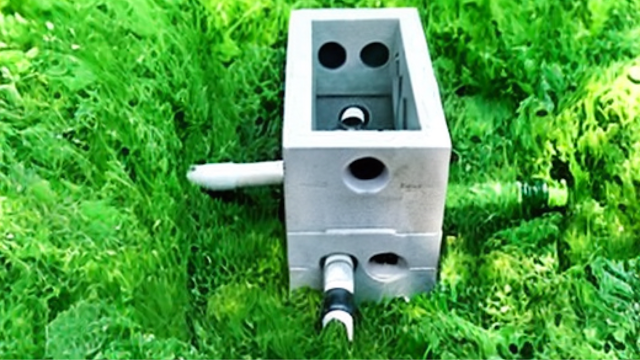

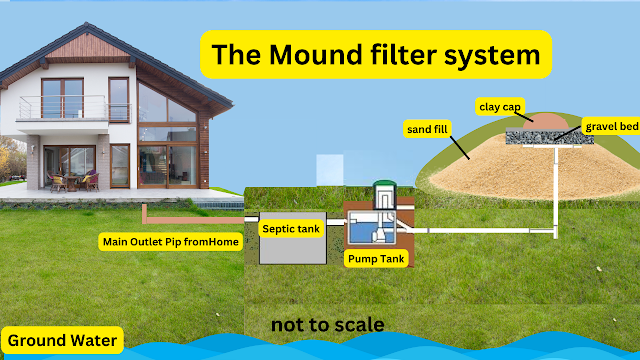
.png)

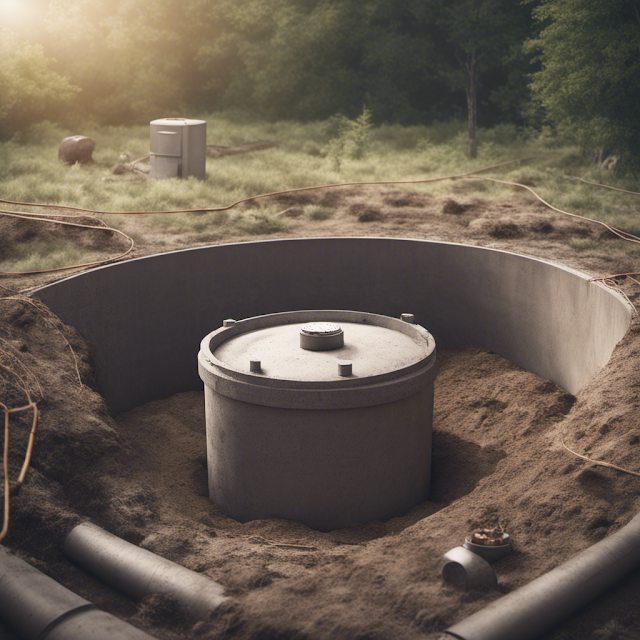
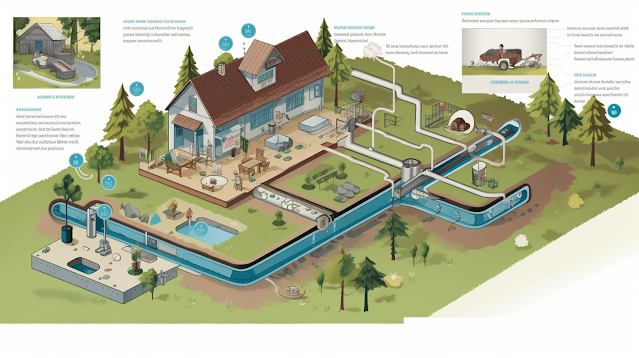
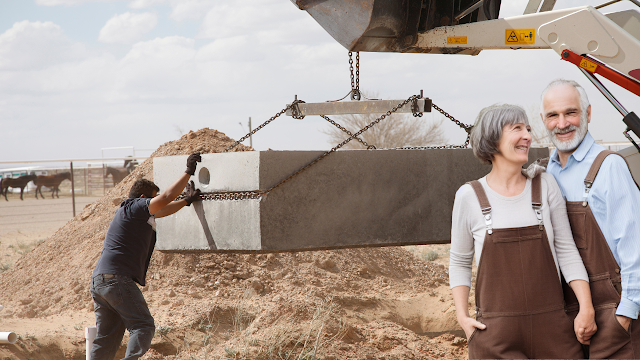


Comments
Post a Comment